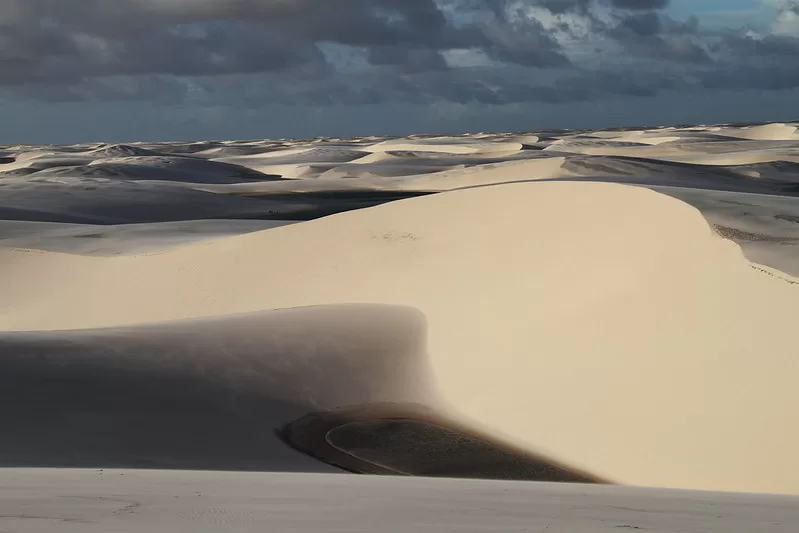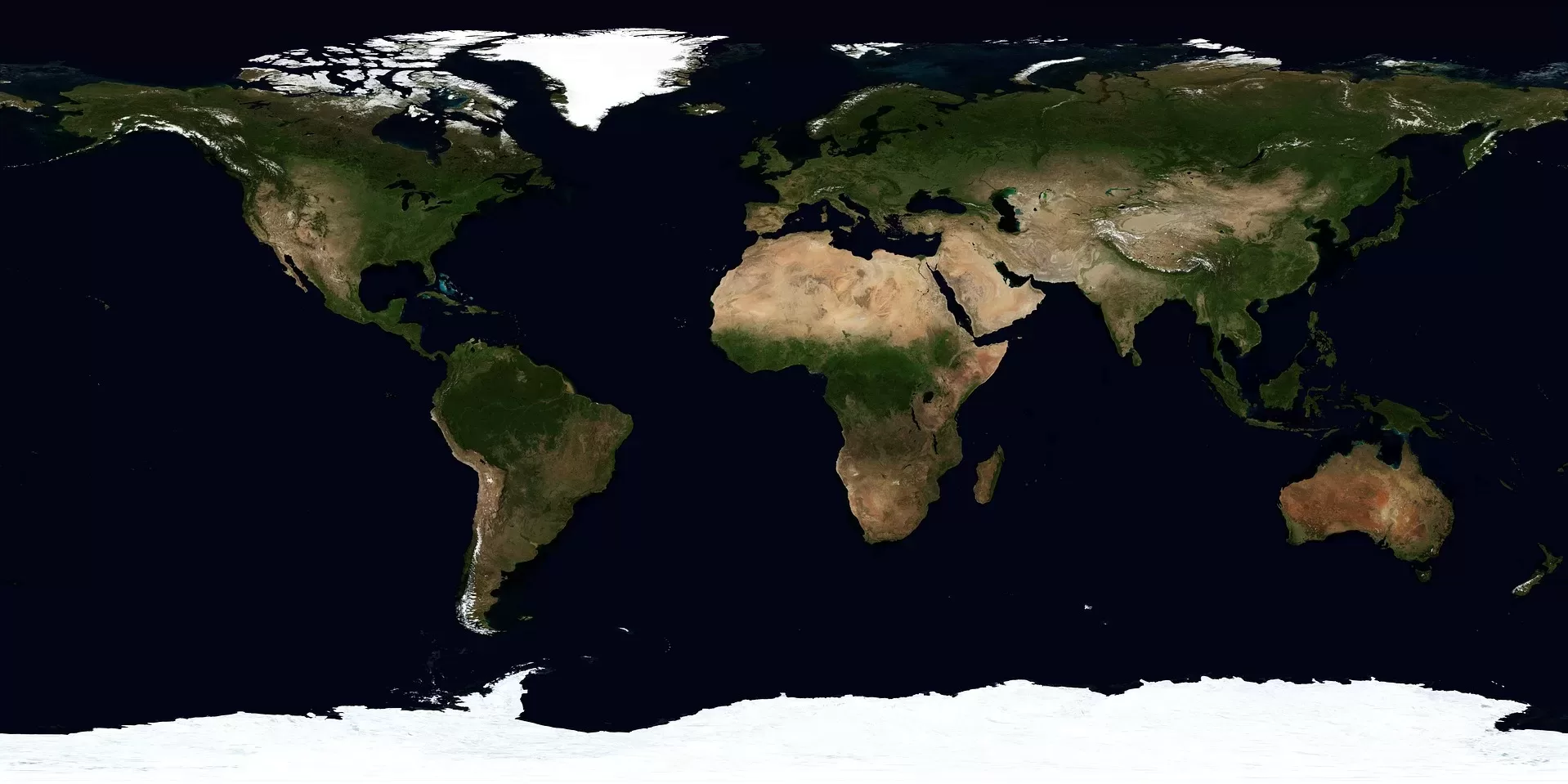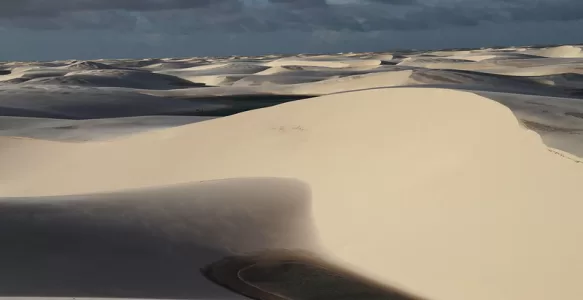Brazil is a vast country, rich in natural, cultural, and historical diversity. Among its many wonders, Lençóis Maranhenses stands out as one of the most unique and breathtaking landscapes in the world. Located in the state of Maranhão, these expansive sand dunes form a true natural spectacle, where white sands intertwine with crystal-clear lagoons, creating an environment that seems straight out of a dream.

Geography and Formation of Lençóis Maranhenses
Covering approximately 155,000 hectares, Lençóis Maranhenses features a landscape of dunes that can reach heights of up to 43 meters. These dunes are the result of geological and climatic processes that have taken place over thousands of years. The region is characterized by a dune system that extends along the coast, with a stretch of dunes approximately 70 km long along the coast and 50 km inland.
The formation of these dunes is influenced by the constant wind blowing from the Atlantic Ocean, pushing sand inland. Over time, this sand accumulates, creating the vast dunes that define the scenery. The dune system is visible even from space, spanning from Barreirinhas to Primeira Cruz, highlighting the grandeur of this natural formation.
What makes Lençóis Maranhenses even more impressive is that, despite appearing as a desert, the region is filled with freshwater lagoons that form during the rainy season, from January to June. These lagoons can reach depths of up to 5 meters and are scattered among the dunes, creating a spectacular contrast between the white sands and the blue, crystalline waters.
Climate and Best Time to Visit
The climate in Lençóis Maranhenses is semi-arid, with high temperatures during the day and milder nights. The heaviest rainfall occurs between January and June, which is the ideal period for lagoon formation, turning the area into a lush oasis of life and beauty. During this time, visitors can enjoy the full lagoons, which reflect the sky and dunes, creating a breathtaking scene.
From May to October, the climate becomes drier, and the lagoons begin to dry up, exposing more of the dunes. Therefore, the best time to visit Lençóis Maranhenses is between June and September, when the lagoons are full and the weather is more temperate. This combination offers a unique experience—walking across white sand dunes surrounded by crystal-clear lagoons under an intensely blue sky.
Flora and Fauna of the Park
Despite its desert-like appearance, Lençóis Maranhenses hosts a rich biodiversity. The fauna includes various bird species such as herons, swallows, and seabirds, as well as fish that inhabit the temporary lagoons. These lagoons serve as breeding grounds for many fish species, which reproduce during the rainy season.
Chameleons, lizards, and insects are also part of the local ecosystem, adapted to the high temperatures and low humidity. The vegetation mainly consists of hardy plants that have adapted to the sandy dunes, forming low-lying vegetation that helps stabilize the dunes and prevent erosion.
Tourism and Activities in Lençóis Maranhenses
Tourism is one of the main economic activities in Maranhão, and the region has seen significant development over the years, with the establishment of guesthouses, hotels, and tour agencies offering jeep rides, hikes, and boat trips.
Jeep Tours and Hiking
The most common way to explore Lençóis Maranhenses is through jeep tours, which take visitors to the main lagoons and dunes. These tours typically last a full day and include stops at strategic points for photos, swimming in lagoons, and enjoying the breathtaking scenery.
For the more adventurous, hiking across the dunes offers a closer connection to nature. While physically demanding, these walks reward visitors with panoramic views and moments of reflection amid the vast white sands.
Boat Tours and Visits to Local Communities
Another popular activity is boat trips along the Preguiças River, connecting Barreirinhas to nearby riverside communities and beaches. During these trips, visitors can explore the famous Vassouras fishing village and the Mandacaru Lighthouse, which offers a panoramic view of the region.
Local communities such as Atins and Caburé provide a rich cultural experience, with traditional cuisine, handcrafted products, and insights into the local way of life.
Ecotourism and Adventure Tourism
For ecotourism and adventure enthusiasts, Lençóis Maranhenses offers various options, including buggy rides, rappelling, sandboarding, and birdwatching. These activities allow for a deeper immersion into the environment and foster greater awareness of the importance of preserving this unique ecosystem.
The Importance of Preservation
Despite its stunning beauty, Lençóis Maranhenses faces environmental threats such as uncontrolled tourism, pollution, and dune degradation. Therefore, conservation efforts are vital to ensure that future generations can enjoy this natural heritage.
The Chico Mendes Institute for Biodiversity Conservation (ICMBio) manages the park, promoting environmental education, monitoring, and regulation of tourism activities. Visitors are encouraged to respect the rules, such as avoiding trampling lagoons, not littering, and refraining from using motorized vehicles outside designated areas.
Lençóis Maranhenses is one of Brazil’s and the world’s greatest natural wonders. Its unique combination of white sand dunes and crystalline lagoons creates an unparalleled landscape that captivates travelers from all over the globe. Beyond its aesthetic appeal, the park symbolizes biodiversity and the critical importance of environmental conservation.
Visiting Lençóis Maranhenses is a memorable experience—an opportunity to connect deeply with nature. It invites exploration of one of the most incredible environments on the planet, where sand and water unite to produce a spectacle of colors, shapes, and sensations.
If you seek an unforgettable adventure, a genuine connection with nature, or simply wish to witness a breathtaking landscape, Lençóis Maranhenses should undoubtedly be on your travel list. This paradise of sand and water exemplifies how, when preserved, nature can craft surreal scenes capable of transforming our perception of the world around us.


